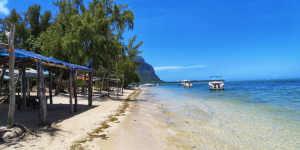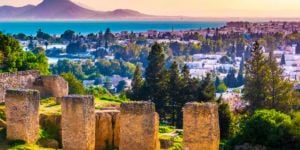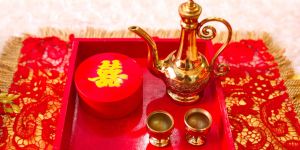
If you've recently moved abroad, especially to a tropical country, Christmas will probably be different from what you're used to. But what is Christmas like without the snow and the cold, and a cup of hot chocolate by the fireplace? While Christmas is celebrated in most tropical countries, even in the southern hemisphere, some of them have their own traditions.
Outdoors Christmas in Australia and New Zealand
In Australia and New Zealand, Christmas is celebrated in summer. So most celebrations take place outdoors, and people make the most of the sun and the beaches. Christmas is a public holiday in Australia, like in New Zealand. Australians usually enjoy a barbecue on the beach while surfers wear their Christmas hats for the occasion. You will also come across Santa Claus distributing candies to children on the beach. Christmas trees are different from those of the Northern Hemisphere. Instead of garlands and Christmas balls, you will find beautiful flower decorations.
In New Zealand, you can usually enjoy Christmas parades. Besides, the country has its own Christmas carols. For Christmas dinner, the Kiwis prefer a barbecue along with fresh seasonal vegetables.
Madagascar: Christmas mass and family gatherings
In Madagascar, December is the season for lychees. So it's quite normal to find them amidst the Christmas lunch consisting of chicken or pork, and rice, followed by the traditional Christmas cake. As in most countries, Christmas is more of a cheerful family gathering after mass and the Christmas shows. Note that in Madagascar, Christmas carols are sung in Malagasy, the national language. Regarding the Christmas decor, even though it's a warm country, be prepared to find holly, as well as artificial snow to remind you of Christmas in the Northern Hemisphere.
South Africa: alfresco dining and backfiring
As in the rest of the world, Christmas carols are part of the traditions in South Africa. But people decorate the fir trees outdoors, and children put their stockings under the tree until Christmas. As the weather is warm, most people gather outdoors both for lunch and dinner. The Christmas meal usually comprises roast turkey, duck or beef, yellow rice with raisins, as well as the mince pie. Many prefer braai. For dessert, the traditional Christmas pudding is a must, but you can also find ice cream cakes. Besides, in South Africa, it is customary to eat fried caterpillars for Christmas! It brings good luck. After dinner, South Africans burst firecrackers.
Christmas in Brazil and Argentina: a mix of traditions
In Brazil, most celebrations take place on Christmas Eve. Friends and family get together for the Christmas dinner in a cheerful atmosphere with loud music until midnight. The Christmas meal has Brazilian, Portuguese, Spanish and Italian influences. In the south, where German culture is very present, you can eat stollen (bread with nut and dried fruits). In general, Generally, Brazilians have turkey or Chester (turkey breast in a ball shape) ham, and often cod, along with by rice, vegetables and potato salad, or lasagna. In some places, panettone (cake stuffed with raisins, citrus zest and candied fruit) is served. On Christmas day, however, most people relax and have the leftovers.
In Argentina, which is also a hot country, you're not likely to find fir trees. So any tree can be decorated. However, Argentines like to give it a Northern touch by adding cotton balls that represent snow for Christmas. As Argentina has a large Catholic community, midnight mass is usually housefull. Christmas dinner is similar to Brazil's, with roasted beef or turkey, followed by fireworks. Also, Argentines have a tradition of staying awake for Christmas Eve to talk with their loved ones.
Philippines: Simbang Gabi and Noche Buena
If you're in the Philippines, expect a Christmas like no other. In this country, Christmas celebrations begin on December 16 until the first week of January, when Epiphany or the Feast of the Three Kings is celebrated. There are nine masses, in total, most of which are held before dawn. Thanks to its large Catholic community, Christmas is one of the most important festivities in the Philippines. Although it is a tropical country, December is the coolest month of the year. The wet season goes from June to October while the dry season is from April to May. On Christmas Eve, Filipinos stay awake after the mass called “Simbang Gabi”. As from midnight, they start celebrating “Noche Buena”. Christmas Day is more a family meal with lechon (roast pork), ham, steamed rice, fruit salads, as well as desserts.
Christmas in the Caribbean Islands
If you're lucky enough to celebrate Christmas in the Caribbean Islands, the festivities are extraordinary. In the Bahamas, for example, Junkanoo is celebrated from December 26 to January 1st. On this occasion, a massive parade begins at 2 a.m. until dawn. There's music, dance and troupes of dancers dressed in brightly coloured costumes. Each of these troupes, some of which have several hundred participants, defines its themes and creations. Christmas celebrations are similar in most of the Caribbean islands. In Montserrat and Saint-Christophe, you can even expect beauty and music contests. The Christmas meal begins with sorrel, a drink made from a flower, followed by a pasta pie, ham, roasted turkey or beef, and a dessert consisting of either a black cake or a dried fruit cake, steeped in wine or rum.




















Comments
1